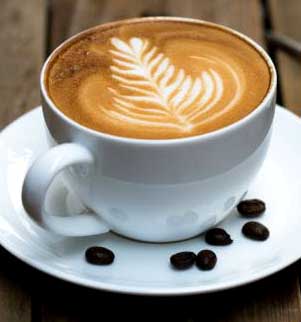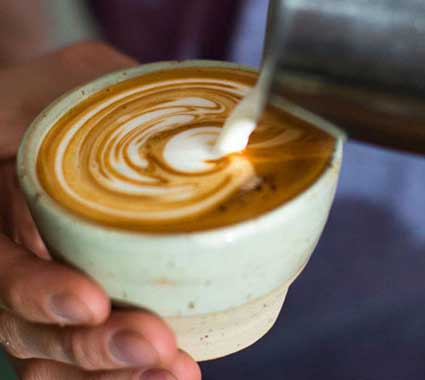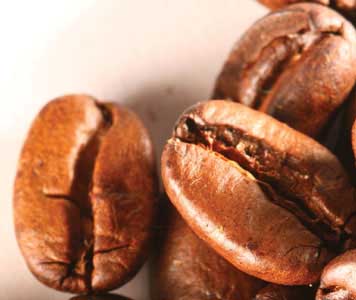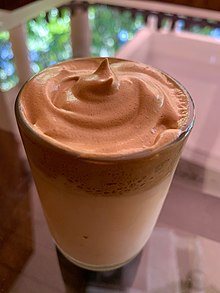Fun facts about coffee

The first notes about the discovery of coffee are shrouded in mystery and magic. The most popular legend tells about Kaldi - a shepherd of goats, whose inventory one day did not return to the farm. The worried boy set out to find him. How great was his surprise, when he found his animals jumping on their hind legs around a lush red fruit tree! The boy searched for the cause of this excitement and tasted the said fruit. The action was immediate – he was agitated, joy and began to dance with his goats. The whole story was to take place in what is today Yemen, from where thanks to the monks, who learned Kaldi's secret, coffee began its journey through the Arab countries, to later spread all over the world.
Retention Policy:
a) store coffee in an airtight container away from other aromatic products;
b) coffee should be in a cool and dry place - near the stove or fridge are not the best ideas due to the moisture and smells prevailing there;
c) Store coffee best in beans, grinding that amount each time, what you need at the moment;
d) do not store the coffee for too long - remember, freshly roasted coffee is always the best.
The most common mistakes:
– using too much or too little coffee - it is important to dose the coffee correctly. For a traditional cup, it is usually from 6-9 g (i.e. 45-60 g per liter). Mocha requires double the amount, and triple espresso.
– heating coffee once brewed - the heated coffee becomes bitter and loses its aroma. To keep the brew warm, a thermos or a thermo mug will be better.
– using the wrong water - the ideal water for making coffee is water:
a) fresh and oxygenated - oxygen is the flavor carrier
b) filtered - that is, devoid of too many minerals that affect the taste of coffee. For this reason, mineral waters are not suitable.
c) with a temperature of approx. 93-95 degrees Celsius - these temperatures can be obtained by stopping the boiling of water in its first stage (more recommended) or wait a while after the water has boiled
Roasting coffee:
This is the final step in the coffee production process. Ziarna kawowe eksportowane są z plantacji w postaci zielonej i palone dopiero
in local or industrial smoking rooms just before sale or packing in bags. Roasting coffee is a very difficult process, which aims to bring out the best aromas from the beans. Improper smoking can damage your coffee very easily.
Experienced roasters know which roasting time and temperature will be best for certain types of coffee. The traditional method of roasting is to roast the beans in a rotating drum, heated to the temperature of. 100-250 degrees Celsius. The coffee must be stirred constantly, until it starts making "shooting" noises.
After recognition, that the coffee is sufficiently roasted, the grains are discharged from the oven and cooled immediately, which allows condensation and retention of valuable aromas in the beans.
The degree of roasting of coffee affects not only the darker or lighter color of the beans, but also its taste and properties. It causes the formation of aromatic compounds from the reaction between sugars and proteins and elimination (complete or partial) acids. The more coffee you roast, the more proteins and fats move from the inside of the grain, on its surface - hence the characteristic gloss and "oiliness" of dark grains. During this time, the sugars are caramelized, and roasted proteins give the coffee a characteristic bitter aftertaste. It is also worth remembering, that as the coffee is roasted harder, the caffeine content in it decreases.
Coffee is an unusual drink - it has been an object of desire for centuries, inspiration for artists, synonymous with luxury. Nowadays, it changes its face, becoming an element of everyday life and perfectly fitting into the rapid civilization changes.. However, she is constantly accompanied by a great passion and love of millions of people around the world.
It is difficult not to be fascinated by these amazing seeds, which have so many faces - with each cup and with each new method of brewing, they can surprise you with their taste, aroma and properties. We want to show you, how many views the coffee has, a przygoda z nią może być wspaniałą drogą do łamania utartych schematów i poszukiwania przez każdego swojej ulubionej formy tego aromatycznego napoju, bez rezygnacji z naturalności i prostoty przygotowania. Being aware of the fast pace of life today, through coffee, we can use the natural energy of caffeine.

ITALIAN PRINCIPLE FOUR “M” guaranteeing the excellent quality of the coffee brew
M jak la miscela - mix - właściwe ułożona kompozycja ziaren lub wysokiej jakości kawa typu single origin (one type) it is the basis of the perfect little black dress. Kierując się wyborem kawy, it is worth choosing it according to the method of brewing and personal taste preferences;
M for la macinatura - grinding - grubość mielenia ma zasadnicze znaczenie. Dobrze kierować się zasadą „im krótszy czas kontaktu kawy z wodą, the finer the ground grains should be ". This rule has its exceptions. It is also worth remembering about the grinder itself - the best one will be the burr, ensures a uniform grinding and does not affect the taste of the coffee, unlike blade mills.
We accept, That:
– very fine grinding – Turkish coffee pot
– fine grinding - a cup (pouring boiling water), pressure coffee machine
– medium grinding – cafeteria, overflow coffee maker, ceramic filter
– coarse grinding – french piston
M for la macchina - machine - czyli ekspres ciśnieniowy, although we can accept, that this applies to all coffee making equipment. Good coffee machine, a cafeteria or a jug with a plunger are often a necessary element of a good brew.
M jak the master hand - mistrzowska ręka – czyli praktyka i wiedza osoby przygotowującej kawę. It is worth practicing coffee brewing, experiment with it and taste it, to reach the championship level.









